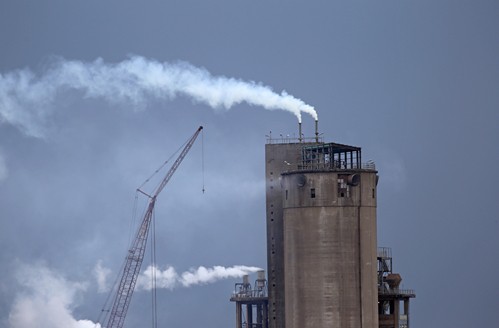Waste heat recovery has been a topic of concern for large-scale industrial companies for several decades. Not only does recovering waste heat make an operation more environmentally friendly, but it also helps to cut costs. Additionally, it can reduce the amount of resources needed to power a facility.
Many industries and facilities have implemented different methods of waste heat recovery. One popular choice is using a shell and tube heat exchanger. According to the Energy Efficiency Guide for Industry in Asia, these exchangers are best suited for recovery methods dealing with warming liquids with heat recovered from:
- Condensates from process steam, distillation processes or refrigeration, or air-conditioning systems
- Coolants from engines, lubricants, bearings, air compressors, furnace doors, pipes or grates
- Flue gas streams and exhaust streams from furnaces, dryers and exhaust stacks
The waste heat usually flows shell side, while the liquid is positioned tube side. This is because the higher-pressure liquid or vapor should be in the tube, because the shell is the weaker container. Utility fluids and products being heated can also be kept cleaner on the tube side of a heat exchanger. Waste heat typically produces condensation. Allowing condensates to form on the inside of the tube will typically cause flow irregularities and could lead to problems with the exchanger.
Vegetable oil processing plant
One example of a shell and tube heat exchanger put into practice for recovering waste heat is outlined in Energy Mines and Resources Canada’s Energy Management Series for Industry Commerce and Institutions. The paper explained a vegetable oil processing plant hoped to reduce its use of a steam heater in the refining process. The semi-processed oil needs to be heated from 30 degrees Celsius to 80 degrees before heading to the final stage of processing and then storage.
“A shell and tube heat exchanger for waste heat recovery saved a processing plant $29,570 a year.”
When the oil is transferred to storage, some heat is expelled that the company wanted to recover. This heat would then be used to warm the oil before going to the steam heater, reducing the amount of energy needed to bring the oil to its optimum temperature. By sending the oil through the heat exchanger prior to going into the steam heater, the oil can be heated to 70 degrees Celsius, requiring the steam heater to only raise the temperature by 10 degrees instead of 50.
By implementing this practice, it was predicted the processing plant could save $29,570 annually. Taking into consideration the cost of the exchanger and its installation, it would take slightly more than half a year to see financial benefits.
Diesel engines
Research done by Saiful Bari, a senior lecturer, and Shekh N. Hossain, a research student at the Barbara Hardy Institute, a division of the School of Engineering at the University of South Australia, showed shell and tube heat exchangers could also provide beneficial heat recovery methods for diesel engines.
Bari and Hossain explained the exhaust from diesel engines contains 38 percent usable energy. Heat exchangers were fitted to connect to the engine’s exhaust and arranged in parallel and series configurations. The two exchangers had different purposes. One, called the super heater, was used to superheat steam coming from the exhaust, which normally expands in the truck’s turbines. The second, named the vapor generator, was used to generate vapor from a liquid put into the exchanger.
The researchers found in initial testing that 16 percent of additional power was recovered. Knowing that the heat exchangers used were not built specifically for this application, they decided to customize them to more efficiently recover the heat. After optimization, 23.7 percent additional power was generated. They also found that maximum heat recovery could be achieved with both the series and parallel arrangements when the engine’s pressure is higher, specifically at 30-bar working pressure. With this pressure, up to 9.85 kilowatts of energy could be retrieved. With lower-pressure engines, the parallel configuration is more efficient than the series configuration because it produced a higher mass of steam.
Bari and Hossain attributed the success of their research partially to the fact that they customized the design of the heat exchangers to the particular engine used. They noted that, by using these shell and tube heat exchangers for heat recovering, the efficiency of the engine rose from 30 percent to 41 percent.
Both of these examples show that waste heat recovery can be used to save money and resources, as well as make processes more energy efficient. Many different industries can benefit from using shell and tube heat exchangers in this way.

